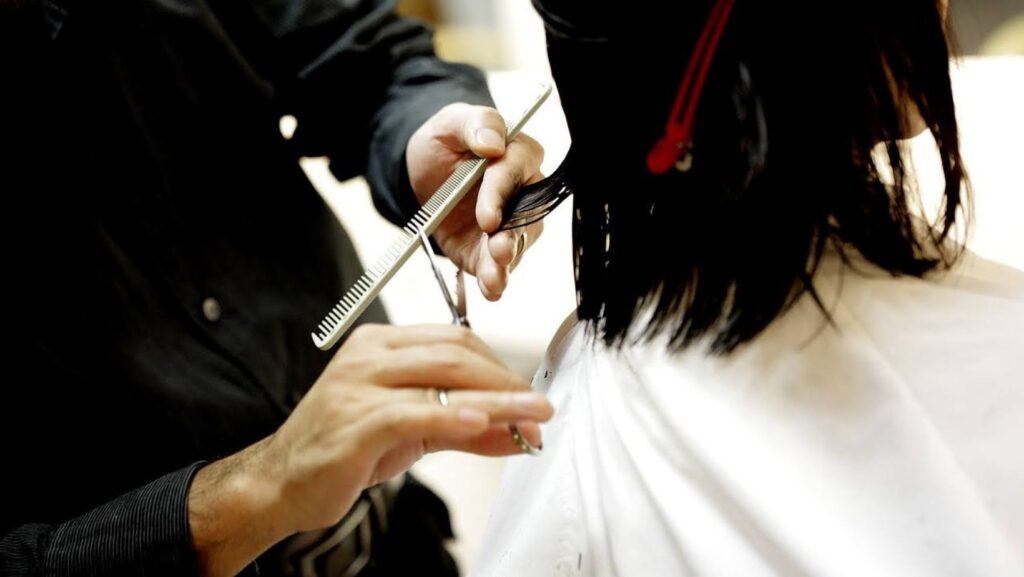Cutting hair can be an incredibly rewarding and creative skill to master, whether you’re looking to save money on salon visits or simply want to express your artistic side. This guide is designed for beginners, providing essential tips and techniques to help you build confidence and competence in cutting hair. From understanding different tools and their uses to learning basic cutting methods and styles, this comprehensive resource will equip you with the knowledge needed to embark on your hair-cutting journey. With practice and patience, you’ll soon find yourself transforming not only your own hair but also the hair of family and friends, making every cut an opportunity for self-expression.
Understanding Hair Types and Textures
Before diving into cutting techniques, it’s crucial to understand the different hair types and textures. Hair can be categorized into straight, wavy, and curly. Each type has unique characteristics and behaves differently when cut. For instance, straight hair often showcases the ends more clearly, while curly hair may spring up, resulting in a shorter finished look than initially intended. Knowing the specific type of hair you’re working with will help you tailor your approach and decide on the best cutting style.
Hair texture—fine, medium, or coarse—can significantly influence your cutting techniques. Fine hair might require more delicate techniques to avoid looking sparse, whereas coarse hair can withstand more weight without losing its shape. Understanding these fundamental aspects allows you to adapt your cutting style and achieve the look your clients desire. Find a messy bob hairstyle guide or loose wave tutorial to get started with cutting different hair types and explore the endless possibilities. It’s also worth noting that hair texture can change over time, so it’s essential to regularly assess and adjust your techniques accordingly.
Essential Tools for Cutting Hair
Equipping yourself with the right tools is essential for success in hair cutting. At the very minimum, you’ll need a pair of sharp haircutting shears, a comb, and a stylist’s cape. The shears should be of high quality to ensure a clean cut. Dull scissors can lead to split ends and an uneven finish, making the importance of good tools undeniable. A fine-tooth comb is also essential for precise styling and sectioning.
Many hairdressers also invest in additional tools such as thinning shears, clippers, and various sizes of combs and brushes. Thinning shears are particularly useful for removing bulk and creating texture without altering the overall length significantly. Clipper sets can assist with shorter styles and fades. Familiarizing yourself with these tools and their specific uses will elevate your hair-cutting skills to the next level.
Basic Cutting Techniques
There are several foundational cutting techniques every beginner should learn. The most common include the blunt cut, layer cut, and point cutting. A blunt cut creates a solid, even edge, perfect for straight hair or achieving a sharp bob. Conversely, layering adds movement and volume, which is especially beneficial for thicker or curly hair types. Understanding when and how to apply these techniques will give you a solid foundation as you experiment with more complex styles.

Point cutting is another valuable technique that softens the ends of the hair and adds texture. This method requires precision and should be approached with care, especially for beginners. As you practice these basic techniques, you’ll build confidence and gain a better grasp of how different styles can be achieved through simple adjustments in your cutting method.
Sectioning the Hair
Effective sectioning is critical in achieving a well-executed haircut. Before cutting, always ensure the hair is clean and completely dry, as wet hair can appear longer and lead to unintended outcomes. Divide the hair into manageable sections, typically starting from the back and working your way to the front. Common sectioning techniques include using horizontal or vertical subsections, which facilitate easier handling and precise cutting.
Each section should be clipped securely to prevent any overlap or confusion during the cutting process. The way you section the hair can dictate the final style, making it imperative to think ahead about the desired look. Additionally, consistently sectioning the hair can help you keep an even length throughout, allowing for a polished and professional finish.
Maintaining Your Tools
Proper tool maintenance is crucial for any hair-cutting endeavor. Regularly cleaning your scissors and clippers not only ensures their longevity but also enhances their performance. Use a soft, dry cloth to wipe down blades after each use, and consider oiling your scissors periodically to keep them functioning smoothly. Clipper blades should also be cleaned and oiled according to the manufacturer’s instructions to prevent dullness and ensure a clean cut.

Moreover, it’s advisable to have your scissors professionally sharpened after significant use, typically every 6-12 months, depending on your cutting frequency. Keeping your tools in good condition allows for precise cuts and can make your hair-cutting experience more enjoyable, minimizing frustrations caused by subpar equipment.
Learning how to cut hair takes time and practice. The more you experiment with different tools, techniques, and styles, the more confident and skilled you’ll become. Continue to educate yourself by watching tutorials, attending workshops or classes, and seeking guidance from experienced hairdressers. With determination and dedication, cutting hair can become a fulfilling and rewarding skill that allows you to unleash your creativity while making others feel good about themselves.
